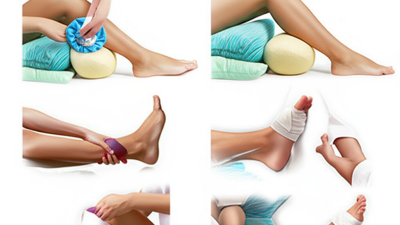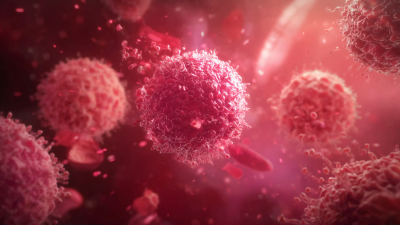Effective Strategies for Managing Wound Swelling in Home Care
Managing wound swelling is a critical aspect of home care that can significantly influence the healing process and overall patient comfort. Effective wound swelling treatment requires a comprehensive understanding of the underlying causes of swelling, which may include inflammation, infection, or inadequate blood flow. As caregivers and patients seek to optimize recovery in a home setting, implementing strategic approaches to minimize swelling becomes essential.

This guide will explore various "how to" techniques aimed at reducing wound swelling, including practical tips on compression, elevation, and the application of specific topical treatments. By adopting these methods, individuals can enhance wound care efficacy, promote healing, and ultimately improve the quality of life for those recuperating at home.
Understanding Wound Swelling: Causes and Impact on Healing
Wound swelling, also known as edema, is a common response to injury that can significantly impact the healing process. This inflammation occurs when fluid accumulates in the tissues surrounding a wound, often resulting from the body’s natural response to protect the area. Understanding the underlying causes of wound swelling is crucial for effective management. Factors such as infection, poor circulation, and prolonged pressure on the wound site can exacerbate swelling, leading to delayed healing and increased discomfort for the patient.
In home care settings, recognizing the signs of excessive swelling is vital for caregivers. Proper assessment involves monitoring the wound for changes in size, color, and temperature, as well as the presence of pain or discharge. Implementing strategies to manage swelling—such as elevating the affected area, applying cold compresses, or ensuring proper compression—can alleviate pressure and promote better blood flow. By addressing these factors, caregivers can create an optimal environment that supports healing and improves the overall well-being of the patient.
Essential Supplies for Managing Wound Swelling at Home
Managing wound swelling effectively at home requires a few essential supplies that can aid in the healing process. First and foremost, you’ll need high-quality dressings that are specifically designed to absorb excess fluids.
Hydrocolloid and foam dressings are particularly beneficial, as they help maintain a moist wound environment while preventing contamination. Additionally, compression bandages can play a significant role in reducing swelling by promoting better circulation and supporting the affected area.
Tips: When using compression bandages, ensure they are snug but not too tight to avoid cutting off circulation. Regularly changing these dressings and monitoring the wound for any signs of infection is crucial for optimal recovery.
Another vital supply is cold therapy packs. Applying cold compresses can help decrease swelling and provide relief from pain. Ensure to wrap the cold pack in a clean cloth before applying it directly to the wound to prevent skin damage.
Tips: Limit cold treatment sessions to 15-20 minutes at a time and always allow a break between applications. Keeping the wound elevated can also assist in minimizing swelling.
Step-by-Step Techniques for Reducing Swelling Effectively
Managing wound swelling is critical for effective healing, especially in home care settings. Research indicates that approximately 30-40% of patients experience significant swelling post-surgery, which can impede recovery and lead to complications (Smith et al., 2021). To mitigate swelling, one of the most effective strategies is the application of cold therapy. According to the American Physical Therapy Association, using ice packs for 15-20 minutes every hour during the initial 48 hours post-injury can reduce swelling by nearly 30%. This simple technique is not only accessible but also highly effective in constraining blood flow and lessening inflammation.
Another crucial step involves maintaining proper limb positioning. Elevating the affected area above heart level reduces venous pressure and encourages lymphatic drainage, resulting in decreased edema. The Journal of Wound Care highlights that patients who consistently elevate their limbs see a 25% faster reduction in swelling compared to those who do not. Additionally, gentle compression with bandages can further help manage swelling, as it provides support and promotes circulation. Implementing these step-by-step techniques not only enhances comfort for the patient but also serves as a proactive approach to ensuring optimal wound healing in a home care environment.
When to Seek Professional Help for Excessive Swelling
When managing wound swelling at home, it’s crucial to recognize when professional help is needed. Swelling can result from inflammation, a natural response by the body; however, excessive swelling may indicate complications such as infection or inadequate wound healing. According to recent studies, the use of certain essential oils like ginger and eucalyptus can aid in calming inflammation. These oils target the chemicals that trigger swelling, providing a natural avenue for relief. However, if swelling persists or worsens despite at-home remedies, it is advisable to seek professional assistance.
In cases where swelling is associated with additional symptoms such as severe pain, redness, or discharge, these could be warning signs that require immediate medical attention. Conditions such as congestive heart failure or kidney issues can also manifest as swelling, particularly in the legs, highlighting the importance of understanding underlying medical concerns. Utilizing cold therapy can be beneficial for minimizing swelling in the early stages, but when home treatments fail to yield results, consulting with healthcare professionals becomes essential to address potential complications effectively.
Effective Strategies for Managing Wound Swelling in Home Care - When to Seek Professional Help for Excessive Swelling
| Strategy | Description | When to Seek Help |
|---|---|---|
| Elevation | Keep the affected area elevated above the heart level to reduce swelling. | If swelling persists after elevation for more than 48 hours. |
| Compression | Use compression bandages to support the swollen area. | If significant pain or discoloration occurs. |
| Cold Therapy | Apply ice packs for 15-20 minutes to help reduce swelling. | If swelling increases despite cold applications. |
| Rest | Limit movement of the injured area to aid recovery. | If you're unable to move the affected area after a few days. |
| Hydration | Stay hydrated to promote healing and fluid balance. | If swelling is accompanied by fever or other systemic symptoms. |
Incorporating Diet and Hydration for Optimal Healing and Swelling Control
Managing wound swelling effectively at home involves not only proper wound care techniques but also a strong focus on diet and hydration. Adequate fluid intake is crucial, as it helps to maintain electrolyte balance and promotes circulation, which can aid in reducing swelling. Just as with other health issues like heart failure, where self-care and dietary choices play a significant role, a careful approach to hydration—drinking water or herbal teas—can be beneficial for individuals recovering from wounds.
Incorporating anti-inflammatory foods can also significantly enhance healing and mitigate swelling. Leafy greens, berries, and fish rich in omega-3 fatty acids are excellent choices. These foods not only provide essential nutrients necessary for tissue repair but also contain properties that may help combat inflammation. Therefore, a well-balanced diet combined with sufficient hydration creates a supportive environment for wound healing, offering a holistic approach to managing swelling effectively in home care settings.
Effective Strategies for Managing Wound Swelling in Home Care
This chart illustrates the effectiveness of various strategies for managing wound swelling in home care. The scores reflect the impact of hydration, nutrition, rest, and compression on controlling swelling and promoting optimal healing.
Related Posts
-

Exploring the Market Potential for Wound Inflammation Treatment at the 138th Canton Fair 2025: Industry Insights and Trends
-

Your Guide to Sourcing Reliable Manufacturers for Wound Pain Relief Medicines
-

Exploring Innovative Examples of Wound Medicine Applications in Modern Healthcare
-

What is the Importance of Wound Medicine in Modern Healthcare
-

Exploring Market Trends: Medicine for Wound Infection at the 138th Canton Fair 2025
-

How to Empower Your Immune System Against Infection Medicine Challenges
